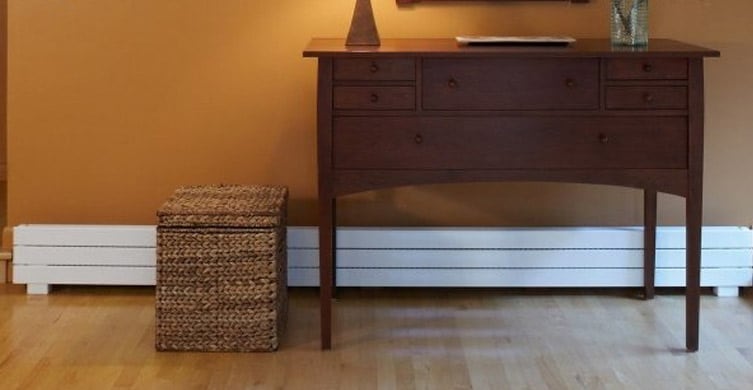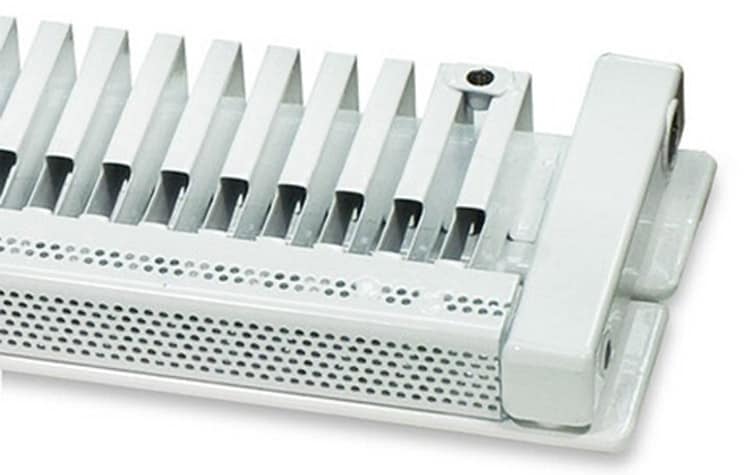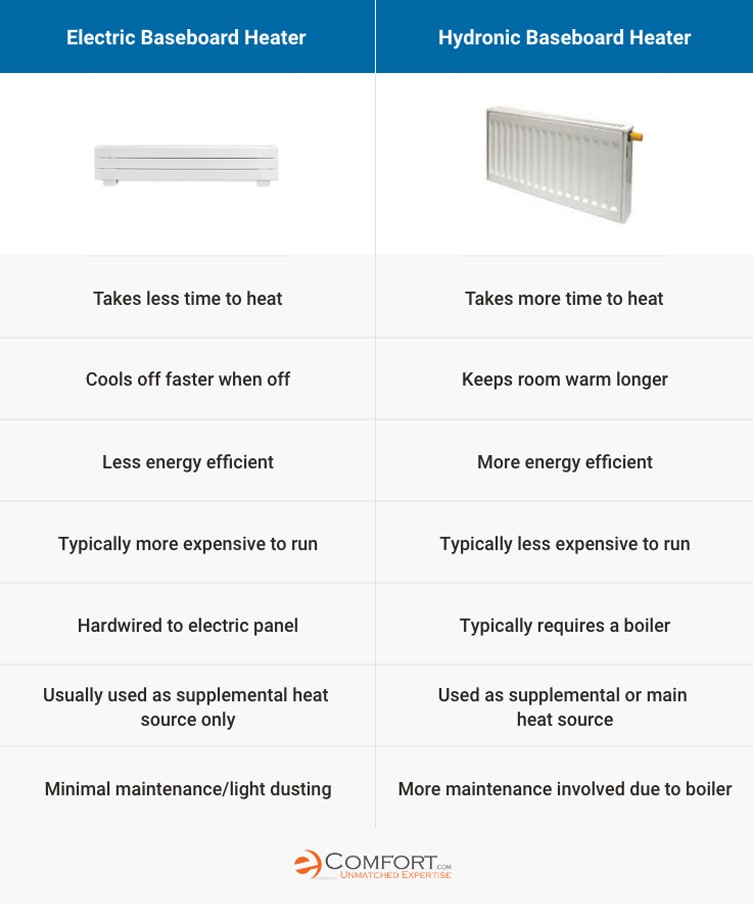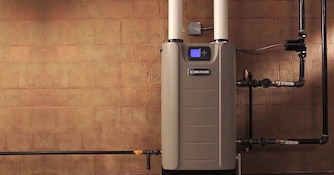
What is Baseboard Heating?
You probably have at least one room in your house that always feels cold no matter how high you turn up the thermostat. For some, it’s the basement. Others complain about a sunroom or home addition being constantly chilly during winter. If you’re a landlord, maybe you’re looking for a low-maintenance way to keep your tenants warm.
Fortunately, there’s a relatively easy way to raise the temperature in those cold spots without overhauling your entire central heating system. It’s called baseboard heating.
What is Baseboard Heating?
Baseboard heaters, also known as baseboard radiators, are low-profile heating panels that use either electricity or hot water to warm up the air in a room. Some electric baseboards even use oil to help distribute the heat.
Primarily meant to provide supplemental heat to cold spots in the house, baseboard heaters are sometimes used as the main source of home heating. They consist of a panel-covered metal enclosure that houses a series of fins and either copper pipe (if heated by water) or an electric cable. Installed low on the wall near the floor, often near windows, baseboard heaters use the natural power of air currents to heat a space.
Let’s look at the two chief types of baseboard heaters—electric and hydronic--in greater depth because they both operate differently.

What is Electric Baseboard Heat?
Electric baseboard heaters are hardwired units that use electrical wires to heat up metal fins inside a panel. Cold air flows into the heater from the bottom and warms up as it passes across the hot fins. The now-warm air naturally rises out of the heater into the room and displaces cold air, which then sinks to the bottom of the heater. The cycle continues until the room has reached the desired temperature.
Often, the electric baseboard radiator panel is placed near a window because that’s usually where the coldest air sits. By targeting cold air at the source, it can make a room feel more comfortable in minutes. In fact, the speed of heating is one of the main benefits of electric baseboards. The natural downside is that the room cools off quickly after the heater shuts off.
Although effective at heating, electric baseboards typically aren’t used as a home’s primary heat source due to high electricity costs. That’s precisely why they work best at occasionally heating a particularly cold room—that chilly home office or guest room. Setup is relatively easy (you still need an electrician for hardwiring) and you have the option to turn them on only when you’re using that room.
If you happen to live in an area where electricity is cheap, such as near an electric dam, you might consider electric baseboards as a whole-home heating solution. They need little maintenance and will let you heat each individual room as much or as little as you want.
Electric baseboard is becoming popular in apartment buildings because it provides effective heat without requiring much maintenance. Landlords won’t get that 2 A.M. call that their tenant’s central furnace stopped working.

What is a Hydronic Baseboard Heater?
A hydronic baseboard heater uses hot water from a boiler to warm up metal fins that in turn heat the passing air. Just like in an electric baseboard, cold air flows through the bottom of the hydronic unit, heats up, and rises into the room.
Rooms heated by a hydronic baseboard radiator can stay warm for longer than those heated by electric baseboards because water takes longer to cool down than an electric wire. The downside is that it also takes significantly longer for the room to warm up using hydronic heat.
Hydronic heating is more energy-efficient than electric heating, so you won’t spend as much money heating your rooms. That’s why hydronic baseboards are sometimes used as the main heat source for a home. However, for this to work, you already need a boiler system up and running. Often, people who install hydronic radiant floor heating supplement it with baseboards because it doesn’t take much effort.
If you don’t already have a boiler system, it would be cost-prohibitive to get one just to have hydronic baseboards. There are some compromise baseboard radiators available that use electricity to heat up the water that wouldn’t require you to have a boiler.

Baseboard Heating Tips
Now that you understand how each type of baseboard heater works and its applications, here are some important tips on using them.
- You can get a rough idea for what size baseboard heater you need by using our sizing calculator. While the calculator will serve as a guide, you should hire a professional contractor to do a Manual J Load calculation for a precise sizing estimate.
- We recommend having an electrician wire a remote thermostat to control your baseboard heater instead of using the built-in thermostat and controls, which sometimes lack accuracy and may be difficult to reach.
- Regularly clean your baseboard radiator panel to prevent dust from building up and impeding the free movement of air, which will hamper efficiency.
- Never block a baseboard heater with furniture, curtains, etc. as this can be a fire hazard.
- Unless you intend to use electric baseboards as your main source of home heating, only turn it on when needed (i.e. you are using the room). Electric baseboard heaters use a bunch of energy, so don’t waste the heat.
- If you’re using the baseboard heater in one room, close the door to that room to keep the heat from escaping.
- It’s perfectly safe to paint your baseboard radiator if you want it to match the room’s color scheme. Just be sure to use the appropriate type of paint for higher temperatures.
Get Started with Baseboard
After reading this guide, if you think baseboard heating could be an option for your home but have additional questions, please contact our experts.





